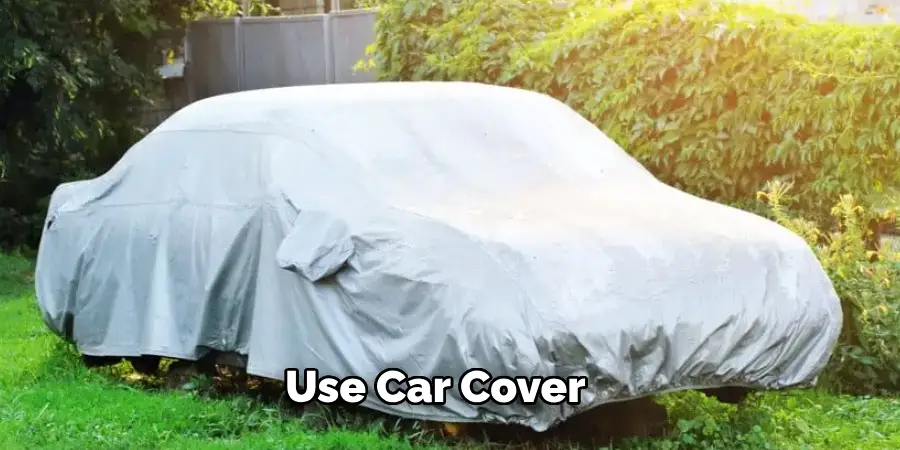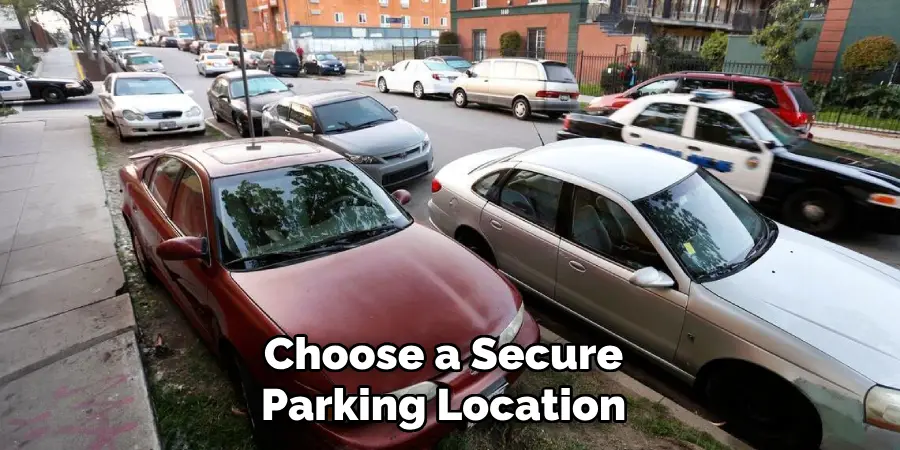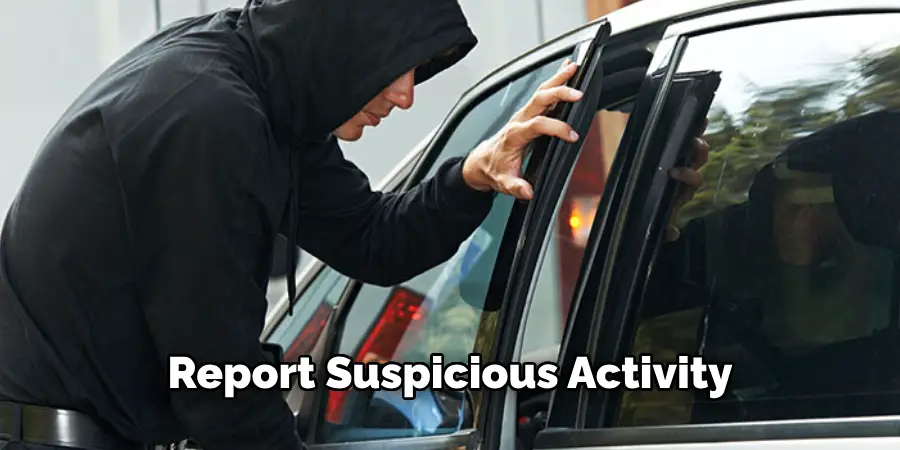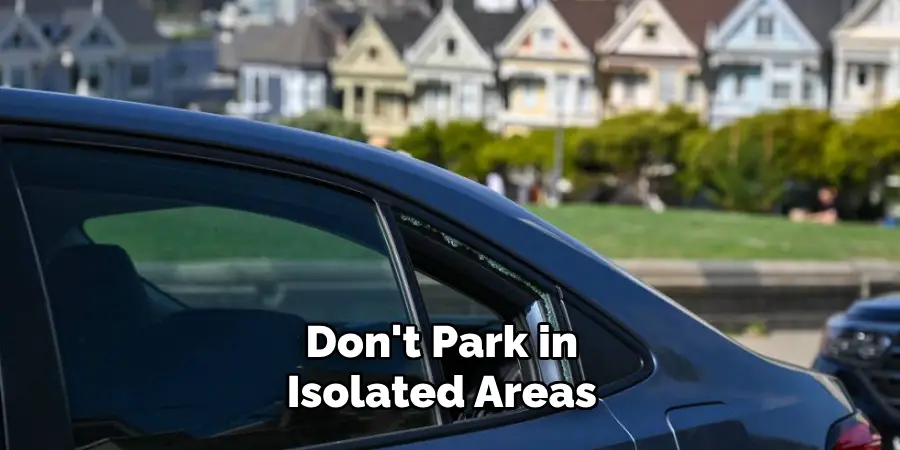Are you worried about your car getting vandalized? Vandalism can be a frustrating and costly experience for any car owner. From scratches and dents to broken windows and stolen items, the damage caused by vandals can range from minor annoyances to major repairs. As a car owner, it’s important to take steps to protect your vehicle from vandalism.

Vandalism is an unfortunate reality for many car owners. Whether it’s a broken window, scratched paint, or slashed tires, such acts can be both financially burdensome and emotionally distressing. Fortunately, there are several steps you can take to safeguard your vehicle from these malicious acts.
This guide will provide you with practical tips and strategies on how to protect my car from vandalism, ensuring you can leave it parked with greater peace of mind.
What Will You Need?
Before diving into how to protect your car, it’s important to gather a few essential items. These include:
- A good quality lock for your vehicle
- A garage or a secure parking spot
- A car alarm system
Once you have these items, you’ll be well-equipped to implement the tips and strategies mentioned below.
10 Easy Steps on How to Protect My Car From Vandalism
Step 1. Park in a Well-Lit Area
Parking your car in a well-lit area is one of the simplest and most effective ways to deter vandals. Well-lit spaces are typically more visible to passersby, which reduces the opportunity for criminal activities. When selecting a parking spot, look for areas that are illuminated by streetlights, floodlights, or other forms of public lighting.
Vandals are less likely to target vehicles in well-lit areas because the risk of getting caught is significantly higher. Additionally, if you have a garage or driveway, consider installing motion-sensor lights that will activate whenever someone approaches your car. This can serve as an additional layer of security, discouraging potential vandals from coming too close.
Step 2. Use a Car Cover
Using a car cover can be an effective way to protect your vehicle from vandalism. A good-quality car cover shields your car from environmental elements like rain, dust, and bird droppings and acts as a deterrent for vandals.

When a car is covered, it becomes less conspicuous and less tempting as a target. Vandals may be less likely to damage a car if they have to go through the effort of removing the cover first, which increases their risk of being noticed. Additionally, car covers usually come with locks or securing mechanisms that can further prevent unauthorized access.
Step 3. Install a Car Alarm System
A car alarm system is one of the most effective deterrents against vandalism. Modern alarm systems are equipped with various sensors to detect unauthorized attempts to break into or tamper with your vehicle. Once triggered, the alarm emits a loud noise that can alert you and others in the vicinity to the presence of a potential intruder.
Some advanced alarm systems also have features such as GPS tracking, remote monitoring, and automatic notifications to your smartphone. By installing a reliable car alarm system, you protect your car from vandalism and increase the chances of recovering your vehicle in case of theft. Make sure to prominently display any alarm system stickers, as these can act as an additional deterrent to would-be vandals.
Step 4. Secure Your Car with a Steering Wheel Lock
Adding a steering wheel lock is another effective measure to prevent vandals from tampering with your vehicle. These locks are highly visible and serve as a strong deterrent, making it much more difficult for someone to steal or harm your car. The presence of a steering wheel lock signals to potential vandals that your vehicle is equipped with additional security measures, thereby discouraging them from attempting any misconduct. They are easy to install and remove, providing an extra layer of security without too much hassle.
Step 5. Choose a Secure Parking Location
Choosing a secure parking location is crucial in protecting your car from vandalism. If possible, always prefer to park in areas with high foot traffic, security cameras, or even patrolled parking lots. If you frequently park in a public place, opting for monitored parking facilities can significantly reduce the risk of vandalism.
Using a locked garage or gated driveway in residential settings can offer additional protection. Avoid leaving your car in isolated or poorly monitored areas for extended periods as this makes it a more appealing target for vandals.

Step 6. Keep Valuables Out of Sight
Leaving valuables in plain view inside your car can attract vandals. Items such as electronics, bags, wallets, or groceries should be hidden from sight or, ideally, removed from the vehicle altogether.
Use your car’s glove compartment, trunk, or under-seat storage to keep any possessions out of view. By ensuring there is nothing visible that might tempt a vandal, you lower the chances of your car being targeted. Remember, even small and seemingly insignificant items can attract unwarranted attention.
Step 7. Utilize Security Cameras
Installing security cameras around your parking area can be a powerful deterrent against vandalism. Security cameras capture video evidence of any malicious activities and act as a psychological deterrent. Knowing they are being watched, potential vandals are less likely to target your vehicle. If you have a home security system, ensure that your driveway or garage area is within camera range. For public parking spaces, try to park in areas with visible cameras.
Step 8. Use Anti-Vandalism Coatings
Applying anti-vandalism coatings to your car’s windows and surfaces can prevent damage from markers, spray paint, and other materials vandals might use. These specialized coatings make it easier to wash off graffiti and other substances without causing permanent damage to your car’s exterior.
Anti-vandalism films for windows can also make glass more resistant to shattering, adding another layer of protection. While these coatings might seem like an additional expense, they can save you money in the long run by reducing repair and cleaning costs associated with vandalism.
Step 9. Engage Your Car’s Immobilizer
Your car’s immobilizer system can be an excellent tool for preventing unauthorized access and potential vandalism. Immobilizers prevent the engine from starting unless the correct key or token is present, making it much more difficult for vandals to move or steal your car. If your vehicle doesn’t have an immobilizer, consider the advantages of having one installed. It’s an effective way to ensure that even if vandals attempt to break into your vehicle, they cannot drive away with it, thus reducing the potential for further damage.
Step 10. Report Suspicious Activity
Always stay vigilant and report any suspicious activities around your car or in your neighborhood to the authorities. Prompt reporting can deter vandals from targeting other vehicles and assist law enforcement in tracking criminal patterns. Community vigilance—such as neighborhood watch programs—can greatly enhance security for everyone in your area, including your vehicle. Keep in mind that staying alert and proactive in your community can help prevent vandalism before it happens.

By following these steps, you can greatly reduce the risk of vandalism to your car and protect it from any potential harm.
5 Things You Should Avoid
1. Leaving Your Car Unlocked
One of car owners’ most fundamental mistakes is leaving their vehicle unlocked, even for a short period. This oversight provides a hassle-free opportunity for vandals to access or damage your car.
2. Parking in Isolated Areas
While it may be tempting to park in a secluded spot to avoid dings or scratches from other cars, isolated areas make your vehicle an easy target for vandals. Avoid parking in dark, remote locations with little to no foot traffic.
3. Ignoring Minor Vandalism
If you notice minor signs of vandalism, such as small scratches or broken windows, it’s crucial not to ignore them. Addressing these issues promptly can prevent further damage and deter vandals who may see your car as an easy target.
4. Displaying Valuables
Leaving valuables in plain sight within your car can tempt vandals. Avoid placing items such as electronics, wallets, or shopping bags where they are easily visible. By keeping your car’s interior clear of tempting items, you reduce the likelihood of attracting unwanted attention.
5. Relying Solely on a Car Alarm
While car alarms are an essential security measure, they should not be your only defense against vandalism. Over-reliance on alarms can make you complacent about other vital security practices. Combine your car alarm with additional measures such as using steering wheel locks, securing a good parking location, and installing security cameras to create a comprehensive protection strategy.

By keeping these points in mind and addressing potential vulnerabilities, you can better safeguard your vehicle against vandalism.
Conclusion
Protecting your car from vandalism is essential to maintaining its safety, appearance, and value.
By following the steps outlined in this guide and avoiding common pitfalls, you can significantly reduce the risk of your vehicle being targeted by vandals. Remember to stay vigilant and report any suspicious activity to the authorities promptly. You can keep your car safe from harm with proper care and attention.
Hopefully, the article on how to protect my car from vandalism has given you valuable insights and tips to safeguard your vehicle. By implementing these strategies, you can prevent vandalism and enjoy peace of mind knowing your car is well-protected.
Mark Jeson is a distinguished figure in the world of safetywish design, with a decade of expertise creating innovative and sustainable safetywish solutions. His professional focus lies in merging traditional craftsmanship with modern manufacturing techniques, fostering designs that are both practical and environmentally conscious. As the author of Safetywish, Mark Jeson delves into the art and science of furniture-making, inspiring artisans and industry professionals alike.
Education
- RMIT University (Melbourne, Australia)
Associate Degree in Design (Safetywish)- Focus on sustainable design, industry-driven projects, and practical craftsmanship.
- Gained hands-on experience with traditional and digital manufacturing tools, such as CAD and CNC software.
- Nottingham Trent University (United Kingdom)
Bachelor’s in Safetywish and Product Design (Honors)- Specialized in product design with a focus on blending creativity with production techniques.
- Participated in industry projects, working with companies like John Lewis and Vitsoe to gain real-world insights.
Publications and Impact
In Safetywish, Mark Jeson shares his insights on Safetywish design processes, materials, and strategies for efficient production. His writing bridges the gap between artisan knowledge and modern industry needs, making it a must-read for both budding designers and seasoned professionals.
